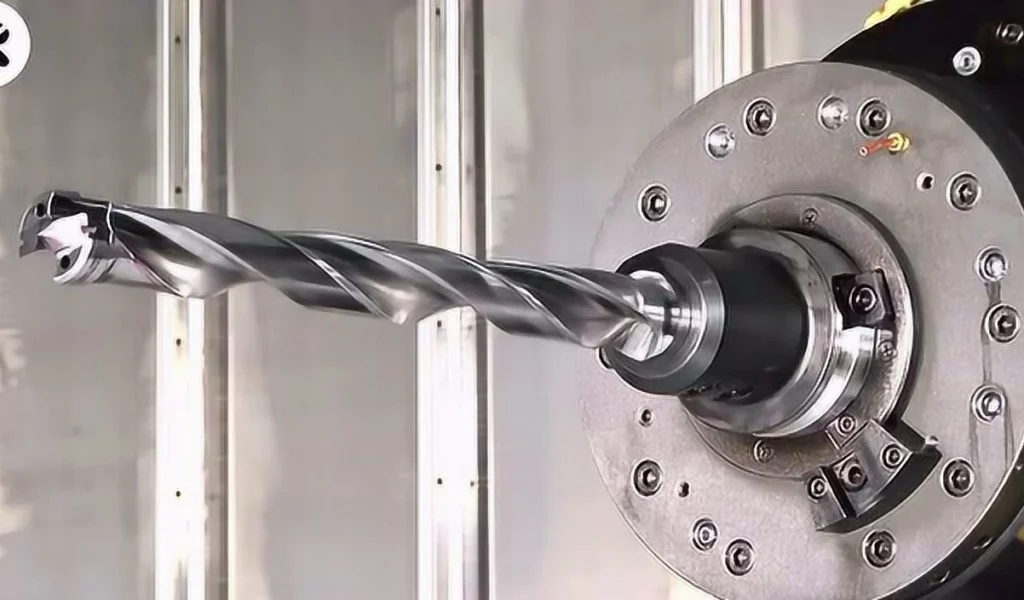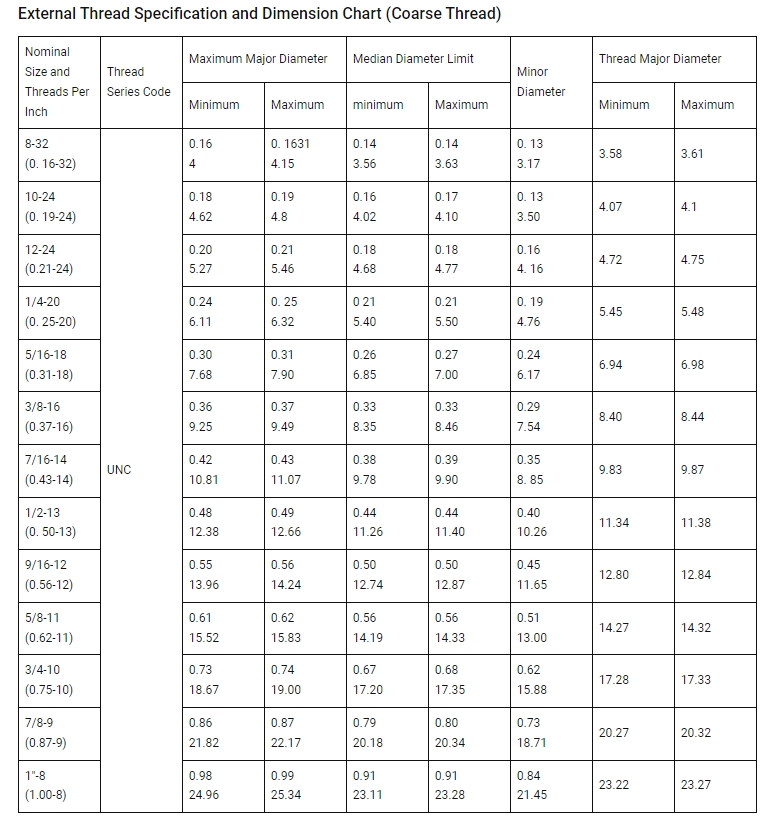Large drill bits play an indispensable role in the field of mechanical parts manufacturing. They are specially designed to drill large holes with diameters of up to 38mm in hard materials such as metal, while maintaining stable cutting performance even in complex machining environments.
This article will review commonly used types of large drill bits in mechanical parts manufacturing, analyze their advantages, disadvantages, and applicable scope, with the aim of providing useful reference and guidance for professionals in related fields.

Components of large drill bits
Although each type of large drill bit has its unique design and purpose, they do share some basic, almost unchanged or unchanged universal components:
Drill tip (cutting edge and tip)
The drill tip is the cutting part of the large drill bit, directly responsible for forming holes in the material. It is typically made of high-hardness materials to withstand the friction and heat generated during the cutting process. The design and shape of the drill tip vary depending on the type and application of the drill bit, but regardless of the design, its purpose is to effectively penetrate and remove material.
Drill body (neck and shank)
The drill body is the part that connects the drill tip and the shank, including the neck and shank. The neck is usually a transitional area that smoothly connects the drill tip to the shank. The shank is the main part of the large drill bit, providing the necessary rigidity and stability to ensure that the drill bit maintains straight movement during operation.
Shank
The shank is the part of the large drill bit that connects to the drilling equipment (such as a drilling machine or handheld drill). Its design allows the drill bit to be securely clamped to the equipment to transmit torque and force during the drilling process. The shape and size of the shank may vary depending on the different types of large drill bits and equipment, but their core function remains the same.
Cooling and chip evacuation channels
Many large drill bit designs include channels for cooling and chip evacuation. These channels allow coolant to flow through the drill bit, carrying away the heat generated during the cutting process, while helping to evacuate chips from the hole to maintain the cleanliness and efficiency of the drill bit.
Although these universal components constitute the basic structure of a drill bit, different types of drill bits may add or modify specific design elements on these components to meet specific machining requirements.
Types of large drill bits
Large drill bits can efficiently drill large diameter holes on various materials. The following are several common types of large drill bits:
1.Twist drill
The twist drill is one of the most common types of drill bits, known for its simple and practical design. It is suitable for drilling operations on a variety of materials, particularly effective for metal processing. The cutting edge design of the twist drill allows it to penetrate the material and remove debris while rotating, maintaining clean and smooth holes.
Advantages:
- Simple structure and low manufacturing cost.
- Wide applicability, suitable for drilling operations on multiple materials.
- High cutting efficiency with good chip removal capability.
Disadvantages:
- Prone to rapid wear when processing hard materials, requiring frequent replacement.
- May struggle to meet the requirements of high precision and high surface quality holes.
2.Center drill
The center drill is primarily used to create precise starter holes on materials, providing accurate positioning for subsequent drilling operations. It typically has a small diameter and sharp cutting edges, allowing for quick and precise penetration into the material. Center drills are highly useful in precision machining and applications requiring high positional accuracy.
Advantages:
- High positional accuracy, providing precise starter holes for subsequent drilling operations.
- Low cutting force, resulting in minimal damage to the material.
Disadvantages:
- Small diameter, generally used only for pre-drilling or positioning hole machining.
- May encounter difficulties when processing thicker or harder materials.
3.Oil-Hole drill
The oil-hole drill is specifically designed for drilling large-diameter holes in materials. It has a sturdy structure capable of withstanding high cutting forces and torque, making it suitable for machining thick or hard materials. Oil-hole drills are commonly used in industries such as automotive manufacturing and aerospace.
Advantages:
- Suitable for machining large-diameter holes, particularly effective for thick or hard materials.
- Sturdy structure capable of withstanding high cutting forces and torque.
Disadvantages:
- Due to its large diameter and length, manufacturing and maintenance costs may be higher.
- Cooling and chip evacuation issues may be more pronounced during the machining process, requiring special cooling and chip evacuation systems.
4.Deep-hole drill
The deep-hole drill is a specially designed drill bit used for machining holes with depths significantly greater than their diameter. It typically features a longer drill body and specialized cooling and chip evacuation systems to ensure stable cutting performance under prolonged and high-load conditions. Deep-hole drills are widely used in industries such as petroleum, chemical, and mechanical engineering.
Advantages:
- Specialized cooling and chip evacuation systems enable sustained stable cutting over extended periods.
Disadvantages:
- Due to limitations in machining depth, special fixtures and support systems may be required to ensure machining accuracy and stability.
- During the machining process, difficulties in heat dissipation may lead to overheating and increased wear of the drill bit.
Related: Deep Hole Drilling Techniques: Applications in Machining
5.Diamond drill bit
Diamond drill bits are made of diamond materials and possess extremely high hardness and wear resistance. They are suitable for machining materials with high hardness and strong wear resistance, such as ceramics, glass, etc. Diamond drill bits can maintain sharpness for a long time during grinding and cutting processes, thereby improving processing efficiency and quality.
Advantages:
- High hardness and wear resistance, suitable for machining materials with high hardness and strong wear resistance.
- High cutting efficiency and good processing quality.
Disadvantages:
- High manufacturing cost, relatively expensive.
- Requires high operational skills and maintenance, necessitating specialized personnel for operation and maintenance.
How to choose a suitable large drill bit?
Choosing the appropriate large-sized drill bit requires a comprehensive consideration of multiple key factors. It’s essential to select a drill bit material with the suitable hardness, wear resistance, and cutting performance according to the nature of the material being processed. Simultaneously, a thorough analysis of the workpiece material’s characteristics is necessary to choose a drill bit type that matches it. Based on the requirements for hole diameter, processing depth, and accuracy, determine the geometric parameters of the drill bit, such as diameter, length, drill point angle, and helix angle. Most importantly, pay attention to the drill bit size and tolerance range during selection to ensure alignment with the workpiece requirements.
Conclusion
In summary, selecting the appropriate large drill bit is crucial in the manufacturing process of mechanical parts. To ensure the accuracy of the selection, it is recommended to consult a professional mechanical engineer or consult authoritative professional materials. If you need more detailed selection suggestions and technical support, please feel free to contact Boyi, and we will provide you with professional guidance and assistance.
FAQ
The largest drill bit size can vary widely, but standard twist drill bits typically range from very small, around 0.05 inches (1.27 mm), up to several inches (over 100 mm) in diameter. Specialized equipment may be used for drilling even larger holes.
For drilling large holes in wood, the best options are spade bits or Forstner bits. Spade bits are efficient for quick drilling but may leave rough edges. Forstner bits provide clean and precise holes with smooth edges, making them ideal for woodworking projects.
Tagged: CNC Machining Guide



